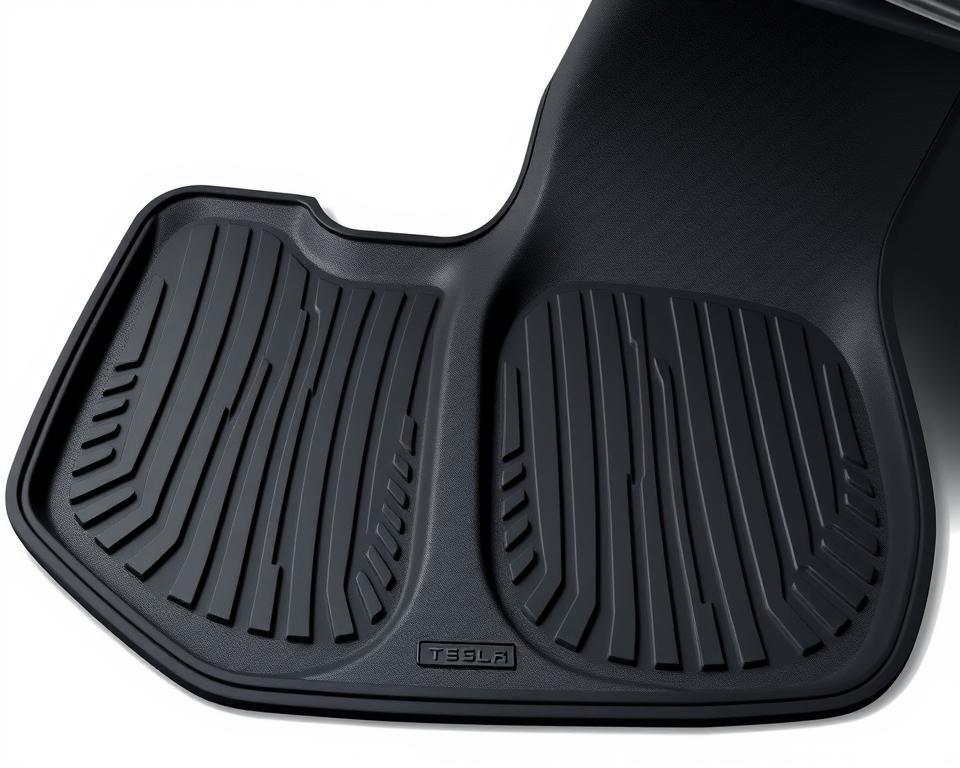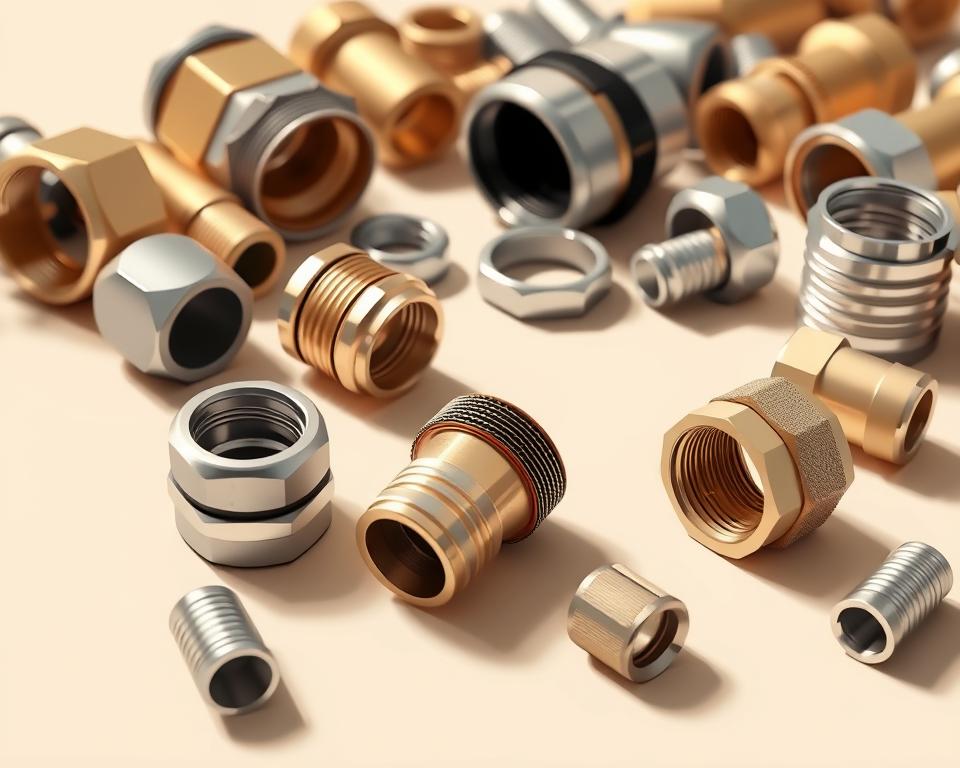A Complete Overview of the FTTH cable Production Line
You’ve arrived at the definitive guide for the FTTH cable production line. This comprehensive article will explore the realm of fiber optic cables and their vital function in facilitating high-speed data transmission. As the demand for faster and more reliable internet connectivity continues to grow, understanding the intricacies of FTTH cable production becomes essential. Covering the essentials of cable infrastructure to the detailed manufacturing process, this guide aims to provide you with valuable insights into the production of Fiber cable sheathing line.
If you’re just starting out in the industry or want to improve your understanding, this guide is for you. You’ll learn about the key components of FTTH cable systems, the part played by optical fibers in FTTH technology, and the process of converting raw materials into high-quality fiber optic cables. Furthermore, our discussion will include design considerations, stranding techniques, buffering and jacketing processes, and how to efficiently operate the FTTH cable production line.
Look out for information on the advanced technologies that are changing FTTH cable manufacturing, as well as the vital role of testing and quality assurance in guaranteeing the reliability and durability of fiber optic cables. We’ll also discuss the last stages of packaging and distribution, making sure the FTTH cable production line works without any issues from start to finish.
Essential Information:
- The FTTH cable production line is crucial in enabling high-speed data transmission.
- The fundamentals of FTTH cable infrastructure and its key components are crucial to understand.
- Fiber drawing, coating application, and testing are the steps in the FTTH cable production process, which starts with silica and ends with fiber.
- To optimize performance, it’s important to design configurations and layouts that meet specific network requirements.
- Support and protection for the fiber are provided by stranding techniques and central strength members.
Fundamentals of FTTH cable Production
A clear understanding of the cable infrastructure, key components, and the role of optical fibers in FTTH technology is essential to comprehend the FTTH cable production process.
Understanding the FTTH cable Infrastructure
The FTTH cable infrastructure is the system of cables, connectors, and distribution points that makes data transmission possible in fiber-to-the-home (FTTH) systems. The backbone of high-speed internet connectivity is formed by this infrastructure, which allows for seamless data transfer between the provider’s network and the end user’s location.

Key Components of FTTH cable Systems
Working together, several key components in FTTH cable systems ensure the smooth and efficient transmission of data. These components include:
- Fiber optic cables: These cables are responsible for carrying the data signals in the form of light. Ensuring fast and reliable data transmission, they are designed to provide high bandwidth and low signal loss.
- Crucially, connectors join fiber optic cables to other cables or devices, and they also make it easy to connect and disconnect cables when needed. Offering a secure and reliable connection, they minimize signal loss.
- Distribution points serve to divide and distribute fiber optic signals among multiple end users. They play a role in making sure every user gets the right amount of bandwidth while keeping the overall network performance intact.
The Role of Optical Fibers in FTTH Technology
Optical fibers are the key component of FTTH technology. Designed to efficiently transmit data signals as light pulses, these thin strands are made of glass or plastic. With their high bandwidth capacity, low signal loss, and immunity to electromagnetic interference, optical fibers are the perfect choice for high-speed data transmission.
The fibers are made of a core, which carries the light signals, surrounded by a cladding layer that reflects the light back into the core, preventing signal loss. Optical fibers can transmit data across vast distances without a decrease in signal quality or speed due to this design.
The Journey from Silica to Fiber: A Step-by-Step Guide
Crafting the Fiber Core: An Explanation of Fiber Drawing
Fiber drawing is the initial step in the FTTH cable production process, and it’s where the cable’s core is made. Pulling and stretching a glass preform made of silica is how this process creates a long, thin fiber. For optimal performance, the fiber drawing process includes careful control of the fiber’s diameter. The quality and composition of the core are crucial in determining how efficiently and accurately the cable can transmit data.
Applying a Protective Layer: Coating Application for Durability
The process continues with coating application after the fiber has been drawn. In this stage, a protective layer, known as a coating, is applied to the fiber. The coating has several roles, including acting as a buffer against external factors like moisture, which enhances the fiber’s long-term durability and reliability. Careful selection of the coating material ensures it has the right mechanical properties, which keeps the fiber intact and protected for its entire lifespan.
Testing for Quality: Fiber Testing in the Production Process
To ensure the fiber’s quality and performance, fiber testing is performed at different stages throughout the FTTH cable production process. These tests involve measuring the fiber’s physical characteristics like diameter, attenuation, and tensile strength, and also checking the coating for uniformity and how well it sticks. It’s crucial to perform these tests to make sure the fiber meets the necessary standards and specifications, which guarantees the overall quality and performance of the final FTTH cables.
| Production Stage | Testing Parameters |
|---|---|
| Fiber Drawing | Diameter, Attenuation, Tensile Strength |
| Coating Application | Coating Thickness, Uniformity, Adhesion |
A Table Summarizing Testing Parameters at Different Stages of FTTH cable Production
A summary of the testing parameters measured during different stages of the FTTH cable production process is presented in the table above. The high-performance and reliability of FTTH cable systems are ultimately achieved because manufacturers conduct rigorous testing to ensure that every fiber used in the cables meets the required quality standards.
How to Design FTTH cable Configurations
In the realm of fiber-to-the-home (FTTH) cable production, cable configuration design is key to fulfilling network requirements and optimizing performance. When designing a cable, you need to consider the network’s capacity, how scalable it is, and the desired speed for data transmission. By tailoring cable configurations to specific needs, companies can ensure efficient deployment and maximize the capabilities of their network infrastructure.
You can choose from a variety of FTTH cable configurations and layouts, and each one has its own advantages and considerations:
- The Daisy Chain Configuration involves connecting each subscriber in a sequence to the main distribution point. It’s a solution that saves money and is suitable for areas where there aren’t many subscribers.
- Star Configuration: In the star configuration, each subscriber is directly connected to the central office or hub. Flexibility and ease of maintenance are features of this design, making it perfect for densely populated areas.
- A circular loop connection of subscribers is what defines the ring configuration. This configuration offers backup and can handle failures, so service isn’t interrupted if the network goes down.
- In a tree configuration, individual subscribers are connected to secondary distribution points, which are connected to the main distribution point. This configuration allows the network to grow easily and is often used in areas where there are a lot of subscribers.
- Mesh Configuration: The mesh configuration provides multiple connections between distribution points, offering high reliability and redundancy. It is commonly used in mission-critical applications where uninterrupted service is essential.
When designing FTTH cable configurations, it is essential to consider the network requirements and expected future growth. Each configuration has its own benefits and limitations, and selecting the right one depends on factors such as subscriber density, geographical location, and service demands.
Working with industry experts and carefully assessing these factors allows companies to develop FTTH cable configurations that are customized to their unique network requirements and deliver the best possible performance.
Understanding Stranding Techniques and Equipment
The production of strong and durable FTTH cables relies heavily on the stranding techniques and equipment employed. There are different stranding patterns that can be used, and each one has its own benefits and is used for specific applications. Efficient and high-quality cable production requires the selection of the right stranding machinery. Central strength members also play a role in providing extra support and protection to the fiber, which contributes to the overall reliability of the FTTH cables.
Exploring Different Stranding Patterns
Choosing the right stranding pattern is a crucial part of producing FTTH cables. Various stranding patterns, such as reverse concentric, SZ stranding, and helical stranding, are used depending on the desired characteristics of the cable. In terms of flexibility, strength, and how well it resists external factors, each pattern has unique features that can enhance the cable’s performance. The specific needs of the application are met through the careful selection of stranding patterns, which guarantees optimal performance and a long life for the FTTH cables.
Choosing the Right Stranding Machinery
Stranding machinery is a crucial component of the FTTH cable production line. While keeping the fibers at the right tension and in the correct alignment, it allows for the precise creation of the stranding pattern. When selecting the right Fiber coloring machine machinery, you need to consider things like the cable’s diameter, the speed of production, and the level of automation you need. The increased efficiency and flexibility of advanced stranding machines enable manufacturers to handle high-volume cable production and also offer customization options.
Why Central Strength Members are Important
Central strength members are used in FTTH cables to enhance their mechanical properties. They provide stability, enhance tensile strength, and protect the delicate fiber within the cable. Typically made of materials like aramid or fiberglass, the central strength members act as a backbone, reinforcing the cable structure and offering resistance against external forces. Their presence ensures that the FTTH cables can withstand installation stresses and maintain signal transmission integrity, making them suitable for various deployment scenarios.
Protecting the Fiber: An Explanation of Buffering and Jacketing
The protection of the delicate fiber within FTTH cables relies heavily on the buffering and jacketing processes during production. These processes ensure that the fiber is shielded from an array of potential threats, including moisture, abrasion, and other external factors that could jeopardize its performance and longevity.
Understanding the Buffering Process
Applying a protective layer around the fiber is what the buffering process involves, and this layer acts as a barrier against environmental elements. By preventing water from penetrating, this layer can stop signal loss or even the fiber from breaking. The cable’s resistance to wear and tear is also enhanced by buffering, which reduces the risk of damage during installation or maintenance.
For the fiber to experience minimal stress, the buffering materials used need to stick to the fiber very well and have a low coefficient of friction. Factors such as the environmental conditions the cable will face and how much protection is desired will determine which buffering material is best to use.
How to Select Jacketing Materials
Jacketing is the process of applying an outer layer to further protect the fiber and the buffering materials. Specific selection of the jacketing material is made to offer strong protection against mechanical stress, impact, UV radiation, and other potential hazards.
The flexibility of the material, how well it resists flames, and whether it can withstand the environmental conditions are all factors considered when selecting jacketing materials. Common materials used for jacketing include polyethylene (PE), polyvinyl chloride (PVC), and low-smoke zero-halogen (LSZH) compounds. The specific application and what the industry standards are will determine which material is chosen, as each one has its own pros and cons.
The Application of Cutting-Edge Jacketing Technologies
The advancements in jacketing technologies have revolutionized the protection of FTTH cables. These latest technologies provide better strength, more flexibility, and improved resistance to environmental factors, leading to greater durability and reliability.
With tight-buffered cables, an innovative jacketing technology, each fiber is individually buffered with a thin layer of plastic, providing excellent protection and flexibility. Micro-ducts, another technology, use strong tubing to contain multiple fibers, offering high density and making cable installation versatile.
Moreover, there are jacketing technologies that are specifically designed to meet the needs of different industries. For example, cables that are used outside in tough conditions might have armored jackets to give them better protection from rodents, moisture, and very hot or cold temperatures.
By leveraging the latest jacketing technologies, FTTH cables can be customized to meet the demands of various applications, ensuring optimal performance, longevity, and reliability.
FTTH cable Production Line Operations
In the FTTH cable production line, efficient operations are crucial to ensure a smooth and streamlined manufacturing process. High-quality fiber optic cables that enable high-speed internet connectivity are produced through each step in the production line playing a vital role. To achieve optimal efficiency, various machinery and equipment are utilized.
Raw materials are prepared first in the manufacturing process, and this includes the silica that will be used for fiber drawing. Following the preparation of raw materials, the fiber drawing process begins, and the cable’s core is carefully crafted to meet the desired specifications. Following fiber drawing, coating application is performed to ensure the fiber’s durability and protection.
Quality is a top priority, and rigorous fiber testing is conducted at every stage of the production line to ensure the cables meet the highest standards. Testing for things like attenuation, bandwidth, and how much signal is lost is part of this.
Efficiency is a key factor in the operations of the FTTH cable production line. Manufacturers can get the most out of their production by using machinery and equipment in the best way, which reduces time and costs while increasing output. Additionally, efficient processes contribute to the overall quality of the cables.
The manufacturing process can be complicated, with various stages and components involved. But, if manufacturers use efficient operations and constantly try to make things better, they can enhance how well and effectively their FTTH cable production line works.
For a complete picture of how the FTTH cable production line operates, the table below summarizes the main machinery and their functions in the manufacturing process:
| Machine | Role |
|---|---|
| Fiber Drawing Machine | Produces the fiber optic cable core by pulling and stretching the silica material. |
| Coating Machine | Applies a protective coating to the fiber optic cable, ensuring durability and resistance to external factors. |
| Fiber Testing Equipment | Conducts various tests on the fiber optic cable to ensure quality and performance. |
| Spooling Machine | Winds the finished fiber optic cable onto spools for packaging and distribution. |
| Jacketing Machine | Applies an outer jacket to the fiber optic cable, providing additional protection and improving its handling. |
By using advanced machinery and technologies, manufacturers can make their production line operations more efficient, improve their effectiveness, and deliver high-quality FTTH cables that satisfy the growing need for high-speed internet connectivity.
Latest Technologies Used in FTTH cable Manufacturing
The field of FTTH (Fiber to the Home) cable manufacturing is constantly changing, and advanced technologies are crucial for making it more efficient and of higher quality. Because more and more people want high-speed data transmission, automation, the use of AI, and fiber coloring machines have completely changed how these cables are made, leading to new ideas and better products.
Using Automation to Produce Fiber Optic cables
The way fiber optic cables are made has been significantly changed by automation. The manufacturing process can be controlled very precisely thanks to advanced machinery and robotics, which leads to consistent quality and fewer errors. Higher productivity, faster production, and better accuracy are all benefits of this automation, which ultimately leads to cost savings and enhanced customer satisfaction.
Using AI to Control Quality
By integrating artificial intelligence (AI) into the quality control process, FTTH cable manufacturers can achieve unprecedented levels of accuracy and reliability. Algorithms powered by AI can analyze production data as it’s being generated, identifying any variations or problems that might impact the quality of the cables. Taking a proactive approach to quality control helps to reduce errors, make production more efficient, and ensure that only the highest quality FTTH cables are made available to customers.
Fiber Coloring Machine Capabilities
FTTH cable manufacturing has been completely changed by the introduction of fiber coloring machines, which offer better ways to customize the cables. With fiber coloring machines, optical fiber strands can be color-coded, which makes it easy to identify them and manage the cables efficiently during installation and maintenance. By using this technology, manual color coding is no longer needed, which reduces the chance of errors and makes the entire process of deploying cables more efficient.
Testing and Quality Assurance: Key to Fiber Optic Reliability
It’s of the utmost importance to ensure the highest quality in the field of fiber optics. To make sure this happens, strict testing and quality assurance procedures are followed during the entire production process. Standardized testing protocols play a crucial role in guaranteeing the reliability and consistency of fiber optic cables.
Steps to Implement Standardized Testing Protocols
Standardized testing protocols are established to ensure that every fiber optic cable meets the required quality standards. At each stage of the production process, these protocols specify the testing procedures and criteria that must be followed. By following these protocols, manufacturers can spot and deal with any potential problems, guaranteeing that only the best quality cables are sent to customers.
How OTDR is Used for Quality Checks
Performing quality checks on fiber optic cables relies heavily on the use of Optical Time-Domain Reflectometer (OTDR). Using light pulses, OTDR is a testing tool that measures how much signal is lost and reflected along an optical fiber. Technicians can find problems like fiber bending, signal loss, or damage to connectors by looking at the OTDR traces. This helps them find exactly where any problems are and fix them, which makes sure the cable is of good quality and works well.
Maintaining Rigorous Quality Assurance Standards
Maintaining quality assurance standards throughout the entire production process is key to ensuring consistent and reliable performance of fiber optic cables. The selection of materials, the processes used to manufacture the cables, and the testing of the final product are all aspects covered by these standards. These rigorous standards help manufacturers ensure that their products achieve the highest levels of quality and performance that the industry requires.
FTTH cable Production: From Packaging to Distribution
In this section, we will look at the final stages of SZ stranding line production, including how they are packaged and distributed. Ensuring that the cables are packaged correctly and efficiently after they have gone through the various manufacturing processes is crucial for their deployment and installation in the field. In addition, using packaging that protects them is crucial for keeping the delicate fiber optic cables safe during transportation and storage. Efficient logistics and supply chain management are crucial for making sure FTTH products are delivered to customers promptly and effectively meet their connectivity needs.
Efficient cable Spooling Techniques
Using efficient techniques to spool cables is vital for making the installation of FTTH cables smooth and convenient. Storing and transporting cables in an organized and practical way is possible with cable spools, which also reduces the chance of them getting tangled or damaged. The deployment process becomes quicker and easier for cable installers when they use optimized cable spooling techniques. When cables are spooled properly, the installation looks neater and more professional overall.
Protective Packaging Solutions for Fiber Optic cables
The delicate fiber optic cables need to be protected during transportation and storage, and this requires the implementation of effective protective packaging solutions. Cushioning, shock absorption, and resistance to external factors like moisture, dust, and physical impact should all be provided by these solutions. By utilizing high-quality packaging materials and techniques, manufacturers can ensure that the fiber optic cables arrive at their destination in optimal condition, ready for installation. This not only keeps the cables in good condition but also makes customers happier by reducing the chance of damage or the cables not working as well as they should.
The Importance of Logistics and Supply Chain Management in FTTH
The successful delivery of FTTH products to customers depends on efficient logistics and supply chain management. This involves carefully planning the transportation, storage, and distribution of the cables to ensure timely and reliable delivery. Effective management of the supply chain helps to keep delays to a minimum, makes the flow of products better, reduces costs, and enhances how customers are served..
Summary
This ultimate guide to the FTTH cable production line has provided a detailed look at the process of manufacturing fiber optic cables for high-speed internet connectivity, in conclusion. We have stressed the importance of the FTTH cable production line in making fast and reliable data transmission a reality throughout this article.
Fiber optic cables play a critical role in facilitating high-speed internet connectivity, allowing for seamless communication, streaming, and online activities. From fiber drawing to buffering and jacketing, the step-by-step process of FTTH cable production makes sure these cables are durable and of high quality.
Automation and AI integration are examples of advanced technologies that have completely changed the manufacturing process, making it more efficient and accurate. In addition, standardized testing protocols and rigorous quality assurance standards guarantee the reliability and performance of fiber optics.
The final stages of FTTH cable production are packaging and distribution, and these ensure that these essential cables are deployed efficiently and protected during transportation. Overall, the expertise and precision involved in the FTTH cable production line are essential in meeting the increasing demand for high-speed internet connectivity around the world.


